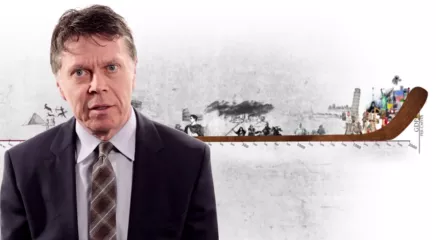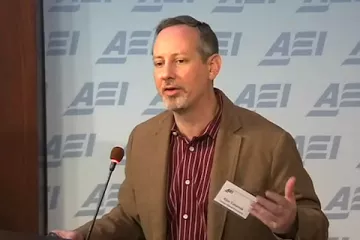The scientific pretensions of economics have been seriously questioned in recent years. Macroeconomists failed to predict the financial crisis and then failed to agree on either the causes or the solutions. It pained me when even my mother began to wonder whether economists were as useful as dentists. Alvin Roth’s “Who Gets What—and Why” is the book that I shall give to mom to redeem my profession.
The scientific pretensions of economics have been seriously questioned in recent years. Macroeconomists failed to predict the financial crisis and then failed to agree on either the causes or the solutions. It pained me when even my mother began to wonder whether economists were as useful as dentists. Alvin Roth’s “Who Gets What—and Why” is the book that I shall give to mom to redeem my profession.
Alvin Roth, co-recipient of the 2012 Nobel Prize in economics, is not a household name even in those few households familiar with the names of economists. But not many economists have as strong a claim as Mr. Roth does to have actually improved the world, even though he began his career as an austere theorist of matching. What’s matching? It is “how we get the many things we choose in life that also must choose us,” as Mr. Roth succinctly puts it. Students may choose Harvard, for example, but they get in only if Harvard also chooses them. Marriage is another obvious example.
Most economic theory focuses on commodity markets, in which anyone willing to pay the price gets the good and anyone not willing to pay the price doesn’t. In matching markets, price isn’t the only determinant of who gets what. Willingness to pay the price is one determinant of who gets into Harvard but not the only one. Willingness to accept a certain wage is one part of who gets a job but not the only one. In some cases, such as assigning kidneys to dialysis patients, price isn’t part of the equation at all—at least in the United States.
Mr. Roth’s work has been to discover the most efficient and equitable methods of matching and implement them in the world. He writes with verve and style, describing many market malfunctions—from aboriginal tribes in Australia arranging marriages for children not yet born to judges bending every rule in the book to hire law clerks years before they have graduated from law school—and how we ought to think about them.
Mr. Roth’s approach contrasts with standard debates over free markets versus government regulation. We want markets to be thick, quick, timely and trustworthy, but without careful design markets can become thin, slow, ill-timed and dangerous for the honest. The solution to these problems is unlikely to be regulation legislated from on high. Instead what Mr. Roth practices is nuanced market design created mostly by market participants. Mr. Roth found, for example, that even though the problems in the market for gastroenterologists and law clerks looked the same (hiring started years before schooling ended), the solutions had to be subtly different because of differences in culture, history and norms.
The regulation that Mr. Roth promotes isn’t central planning but a way to help market participants better achieve their own purposes. Mr. Roth, for example, was asked to propose a rule that would efficiently match medical students with hospitals and that would also increase the number of matches at rural hospitals, which were seen as underserved. Mr. Roth replied that he couldn’t do this—and proved a theorem to show why. A set of matches that increased the allocation of medical students to rural hospitals would violate the preferences of both residents and hospitals and lead to side-deals that would undermine the stability of the matching market. The lesson is that if you want to make it possible to match more residents to rural hospitals, you have to create incentives to make sure that both rural hospitals and residents desire such matches.
The case of kidney transplants captures many of the subtleties of Mr. Roth’s analysis: Many more people need a kidney than there are kidneys available for transplant. Economists such as Gary Becker (and I) have argued that the quantity supplied would increase if we lifted the ban on paying for organs. We haven’t been very successful.
Mr. Roth noticed a different way of increasing supply. It’s often the case that a living donor is willing to give a kidney to a loved one, but the loved one can’t accept it because of immunity mismatch. But if a pair of such mismatched donors could be found (call them A and A´ and B and B´), then perhaps a match could be found by a crisscross pairing: Donor A could give to recipient B´ and donor B could give to recipient A´, thus solving the mismatch problem and saving lives.
Working closely with transplant surgeons, Mr. Roth designed a computerized kidney exchange, based on the austere theories he had developed earlier, that would search through large databases of potential donors and recipients to find the series of exchanges that would maximize the number of lives saved. Today such multi-way exchanges are becoming common. Mr. Roth, however, wants to go further. The larger the database, the more lifesaving exchanges can be found. So why not open U.S. transplants to the world? Imagine that A and A´ are Nigerian while B and B´ are American. Nigeria has virtually no transplant surgery or dialysis available, so in Nigeria patient A’ will die for certain. But if we offered a free transplant to him, and received a kidney for an American patient in return, two lives would be saved.
The plan sounds noble but expensive. Yet remember, Mr. Roth says, “removing an American patient from dialysis saves Medicare a quarter of a million dollars. That’s more than enough to finance two kidney transplants.” So offering a free transplant to the Nigerian patient can save money and lives. It’s hard to think of a better example of gains from trade (or a better PR coup for the U.S. on the world stage). Better matching with computerized markets is saving lives, but more than 100,000 people are still waiting for kidneys in the United States alone. As Mr. Roth acknowledges, we are unlikely to solve the organ shortage completely without compensating organ donors.
“Who Gets What—and Why” is a pleasure to read. It’s also a pleasure to discover that rare species, a humble economist. Humble but useful.

